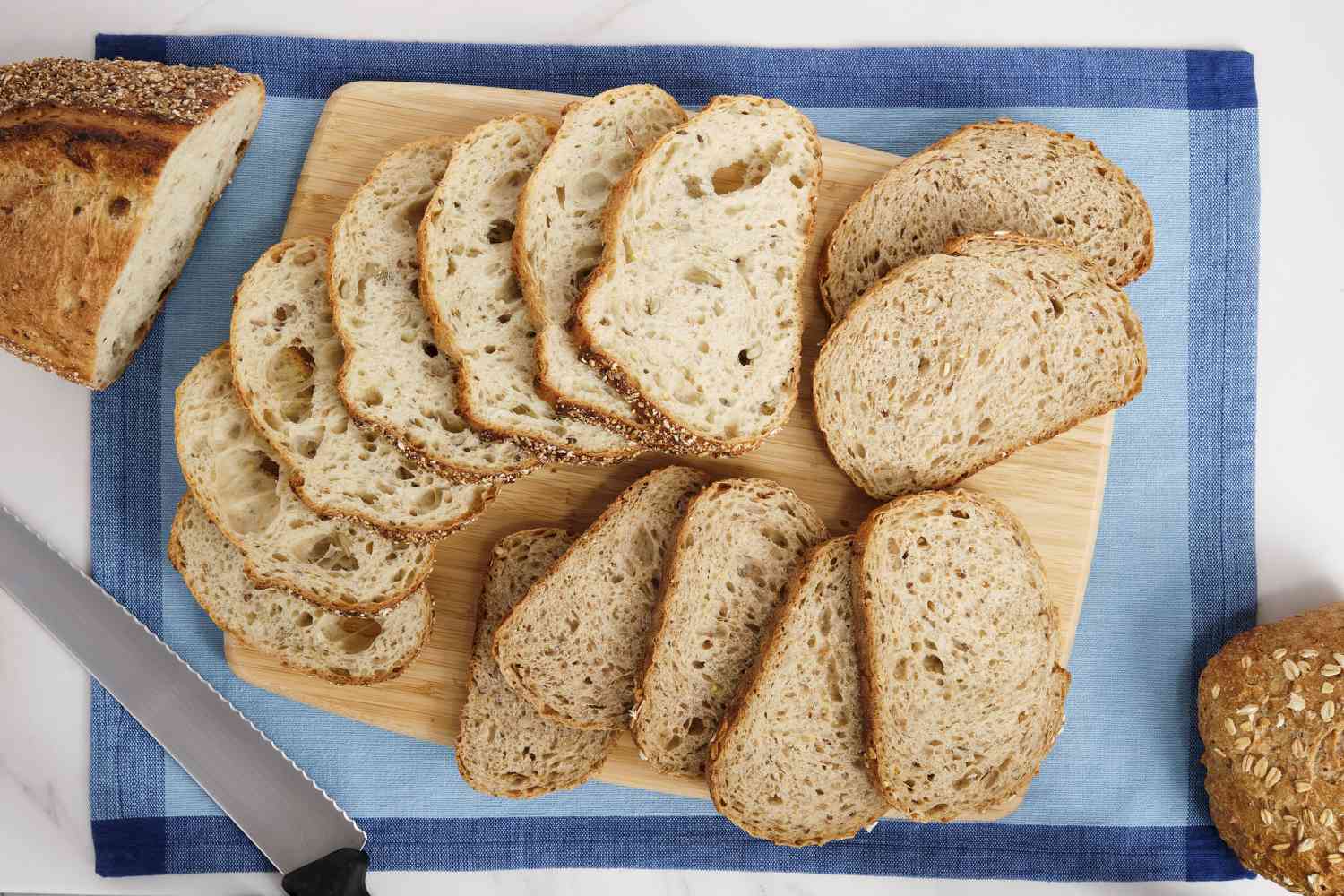

Articles
How To Store Sliced Bread
Modified: February 18, 2024
Looking for tips on how to store sliced bread? Check out our informative articles for the best methods to keep your bread fresh and delicious!
(Many of the links in this article redirect to a specific reviewed product. Your purchase of these products through affiliate links helps to generate commission for Storables.com, at no extra cost. Learn more)
Introduction
When it comes to enjoying a delicious loaf of bread, there’s nothing quite like a freshly sliced piece. The softness, the aroma, and the convenience of having pre-sliced bread make it a staple in many households. However, sometimes we find ourselves with more bread than we can consume in a short period of time.
So, what do we do with the remaining sliced bread? The good news is that there are ways to store sliced bread properly to preserve its freshness and prevent it from going stale too quickly. In this article, we will explore the benefits of storing sliced bread, factors to consider before storage, best practices for storing sliced bread, ways to extend the shelf life of sliced bread, and tips for reheating stored sliced bread.
By following these guidelines, you can ensure that your sliced bread stays fresh and delectable for as long as possible, minimizing food waste and maximizing your enjoyment. So, let’s delve into the wonderful world of storing sliced bread!
Key Takeaways:
- Properly storing sliced bread can extend its freshness, reduce food waste, and provide convenience for meal planning. Consider bread type, storage containers, and temperature to maximize shelf life and flavor.
- Reheating stored sliced bread can restore its deliciousness. Use oven, toaster, or microwave methods, and add butter or oil for extra flavor. Enjoy freshly reheated bread immediately for the best experience.
Read more: How To Store Sliced Bread In A Bread Box
The Benefits of Storing Sliced Bread
Storing sliced bread properly offers several benefits that can greatly enhance your overall bread-eating experience. Let’s take a closer look at some of these benefits:
- Convenience: Storing sliced bread allows you to have ready-to-use portions whenever you need them. This eliminates the need to slice fresh bread every time you want a piece, saving you time and effort in the kitchen.
- Reduced Food Waste: By properly storing sliced bread, you can prevent it from going stale too quickly and ultimately avoid throwing away unused portions. This not only helps to minimize food waste but also saves you money in the long run.
- Extended Freshness: When stored correctly, sliced bread can maintain its freshness for a longer period. This means you can enjoy the same great taste and texture even days after you initially sliced it.
- Flexibility in Meal Planning: Having stored sliced bread on hand gives you the flexibility to create a wide range of delicious meals and snacks. From sandwiches and toast to French toast and bread pudding, the options are endless.
These benefits make storing sliced bread a worthwhile practice. By taking a few extra steps to store your bread properly, you can ensure that every slice remains as fresh and enjoyable as the first.
Factors to Consider Before Storing Sliced Bread
Before you embark on storing sliced bread, there are a few important factors to consider. Taking these into account will help you maximize the shelf life and quality of your bread. Consider the following:
- Bread Type: Different types of bread have varying shelf lives and storage requirements. For example, whole wheat bread tends to have a shorter shelf life compared to white bread. Consider the type of bread you’re working with and adjust your storage plans accordingly.
- Storage Containers: The type of container you use to store sliced bread plays a vital role in maintaining its freshness. Look for airtight containers or resealable bags that can prevent air from reaching the bread. This will help slow down the staling process.
- Humidity: High humidity can accelerate the staling process of bread. If you live in a particularly humid environment, consider using methods like freezing or refrigeration to maintain the freshness of your sliced bread.
- Temperature: Temperature also affects the shelf life of sliced bread. Warm temperatures can cause bread to go stale more quickly, while cooler temperatures can slow down the staling process. Find a cool and dry spot in your kitchen or consider refrigeration or freezing based on your bread’s specific needs.
- Usage Frequency: Think about your bread consumption patterns. If you tend to go through bread quickly, storing it at room temperature with proper storage containers may suffice. However, if you only consume bread occasionally, freezing your sliced bread may be a better option.
- Availability of Space: Consider the amount of space you have available for storing your sliced bread. If you have limited space, prioritizing storage methods that minimize the bread’s footprint, like freezing in ziplock bags, can be helpful.
By taking these factors into account, you can tailor your storage methods to suit your specific needs and ensure that your sliced bread stays fresh and delicious.
Best Practices for Storing Sliced Bread
To ensure your sliced bread stays fresh and tasty, it’s important to follow some best practices for storage. By implementing these practices, you can extend the shelf life of your bread and maintain its quality. Here are some key tips:
- Use Proper Storage Containers: Opt for airtight containers or resealable bags specifically designed for storing food. These containers help create a barrier between the bread and outside air, preventing it from going stale quickly.
- Keep Bread Away from Direct Sunlight: Exposure to sunlight can speed up the staling process and affect the taste of sliced bread. Store your bread in a cool, dark place to maintain its freshness and flavor.
- Refrigerate for Longer Shelf Life: If you won’t be consuming your sliced bread within a few days, consider refrigerating it. Keep in mind that refrigeration can make the bread firm, so always use airtight containers to prevent it from drying out.
- Wrap in Aluminum Foil for Freezing: If you plan to freeze your sliced bread, use aluminum foil to wrap it tightly. This will protect it from freezer burn and maintain its moisture during the freezing process. You can also double-wrap it in a resealable plastic bag for added protection.
- Label and Date Frozen Bread: When freezing sliced bread, it’s essential to label and date the packaging. This way, you can easily identify the bread and know when it was frozen. Frozen bread is best consumed within three months for optimal quality.
- Thaw Bread Properly: When it comes time to enjoy your frozen bread, thaw it properly to prevent moisture loss and preserve its texture. Allow it to thaw at room temperature or gently warm it in the oven for a few minutes.
- Avoid Slicing Bread Too Thin: Thinner slices of bread tend to dry out faster. Aim for slightly thicker slices to help retain moisture and keep your bread fresher for longer.
- Store Different Types of Bread Separately: If you have different types of bread, it’s best to store them separately. This prevents the flavor and moisture levels of one type from affecting the others.
By following these best practices, you can ensure that your sliced bread remains fresh, flavorful, and enjoyable for an extended period. So, go ahead and store your bread with confidence!
Store sliced bread in a resealable plastic bag or a bread box to keep it fresh. Avoid storing it in the refrigerator, as it can dry out the bread.
Ways to Extend the Shelf Life of Sliced Bread
Want to make your sliced bread last longer? Here are some effective ways to extend its shelf life and keep it fresh for as long as possible:
- Freezing: Freezing is one of the best methods to preserve sliced bread for an extended period. Before freezing, make sure your bread is fresh and properly wrapped in aluminum foil or plastic wrap to prevent freezer burn.
- Refrigeration: If you prefer not to freeze your bread, refrigeration can also help prolong its freshness. However, be aware that refrigeration can make bread texture firmer, so it’s crucial to use airtight containers or plastic bags to prevent it from drying out.
- Remove Air: Whether you choose to freeze or refrigerate your sliced bread, it’s important to remove as much air as possible from the packaging to prevent moisture loss. Squeezing out excess air before sealing the bag or container will help maintain the bread’s moisture content.
- Store Unopened Loaf: If you have an unopened loaf of sliced bread, it’s best to store it in its original packaging. The packaging is specifically designed to retain freshness and can keep the bread moist for a longer period.
- Avoid Moisture: Moisture is the enemy of sliced bread, as it can lead to mold growth and spoilage. To prevent moisture buildup, make sure your bread is completely cool before storing it. Avoid placing it in a humid environment or near wet items in your pantry or refrigerator.
- Avoid Frequent Opening: Each time you open the bag or container of sliced bread, you expose it to air and hasten the staling process. To extend its shelf life, try to minimize the number of times you open the packaging. Consider using resealable bags or containers that allow you to take out only what you need.
- Proper Handling: When handling sliced bread, make sure your hands are clean and dry. Avoid touching the bread with wet or oily hands, as it can introduce moisture or cause the bread to go stale more quickly.
- Plan Ahead: To minimize the need for long-term storage, plan your bread consumption ahead. Buy or slice the amount of bread that you can consume within a few days to ensure maximum freshness.
By implementing these techniques, you can significantly extend the shelf life of your sliced bread, reducing waste and ensuring that you always have delicious bread available whenever you need it.
Read more: How To Slice Bread Using A Bread Machine
Tips for Reheating Stored Sliced Bread
If you’ve stored your sliced bread in the refrigerator or freezer, reheating it properly can help restore its freshness and texture. Here are some tips for reheating stored sliced bread:
- Oven Method: Preheat your oven to around 350°F (175°C). Place the desired number of slices on a baking sheet and cover with aluminum foil to prevent them from drying out. Bake for about 10 minutes or until the bread is warmed through. This method works well for both refrigerated and frozen bread.
- Toaster/Toaster Oven: If you prefer a quicker option, you can use a toaster or toaster oven to reheat your sliced bread. Simply place the slices in the toaster or toaster oven and toast them until they reach your desired level of crispness. Keep an eye on the bread to avoid burning it.
- Microwave Method: The microwave provides the fastest way to reheat sliced bread, but it can make the texture slightly soft. Place the slices on a microwave-safe plate and cover them with a damp paper towel to maintain moisture. Microwave on medium heat for 10-15 seconds, checking for desired warmth. Avoid overheating, as it can make the bread rubbery.
- Thawing Frozen Bread: If you have frozen sliced bread, it’s important to thaw it properly before reheating. Remove the desired number of slices from the freezer and allow them to thaw at room temperature or in the refrigerator overnight. Once thawed, you can use any of the reheating methods mentioned above to warm the bread.
- Butter or Oil: To enhance the flavor and moisture of reheated bread, consider adding a small amount of butter or oil to the slices before reheating. Brushing the bread with melted butter or drizzling a little oil can help restore its softness and add extra richness.
- Crisping Method: If you prefer your sliced bread crispy, you can use the oven or toaster oven to achieve that desired texture. Simply place the slices directly on the oven rack or toaster oven tray and bake or toast them until they turn golden brown and crispy.
- Enjoy Immediately: Reheated sliced bread is best enjoyed immediately after reheating. The bread may become stale or lose its warmed texture if left to cool for an extended period. Serve and enjoy your reheated bread while it’s still warm and fresh.
By following these tips, you can restore the deliciousness of your stored sliced bread and enjoy it as if it were freshly baked. Experiment with different reheating methods to find the one that suits your preferences best. With these techniques, you’ll never have to settle for cold or stale bread again!
Conclusion
Properly storing sliced bread is essential to maintain its freshness and extend its shelf life. By following the best practices outlined in this article, you can ensure that your sliced bread remains delicious, moist, and enjoyable for an extended period.
Key factors to consider before storing sliced bread include the type of bread, storage containers, humidity levels, temperature, usage frequency, and available space. Taking these factors into account will help you determine the most suitable storage method for your bread.
Implementing best practices such as using airtight containers, protecting the bread from sunlight, and refrigeration or freezing when necessary can significantly prolong the freshness of your sliced bread. Remember to label and date your frozen bread and thaw it properly before reheating for the best results.
To reheat stored sliced bread, you can use methods like the oven, toaster/toaster oven, or microwave depending on your preference and time constraints. Adding a little butter or oil can enhance the flavor and moisture of reheated bread, while crisping methods in the oven or toaster can give you that desired texture.
In conclusion, storing and reheating sliced bread doesn’t have to be complicated. With the right techniques and a little planning, you can make your bread last longer and continue to enjoy its fresh taste and texture. So, be mindful of how you store your sliced bread, explore different reheating methods, and savor every delicious bite. Happy bread storage and reheating!
Frequently Asked Questions about How To Store Sliced Bread
Was this page helpful?
At Storables.com, we guarantee accurate and reliable information. Our content, validated by Expert Board Contributors, is crafted following stringent Editorial Policies. We're committed to providing you with well-researched, expert-backed insights for all your informational needs.
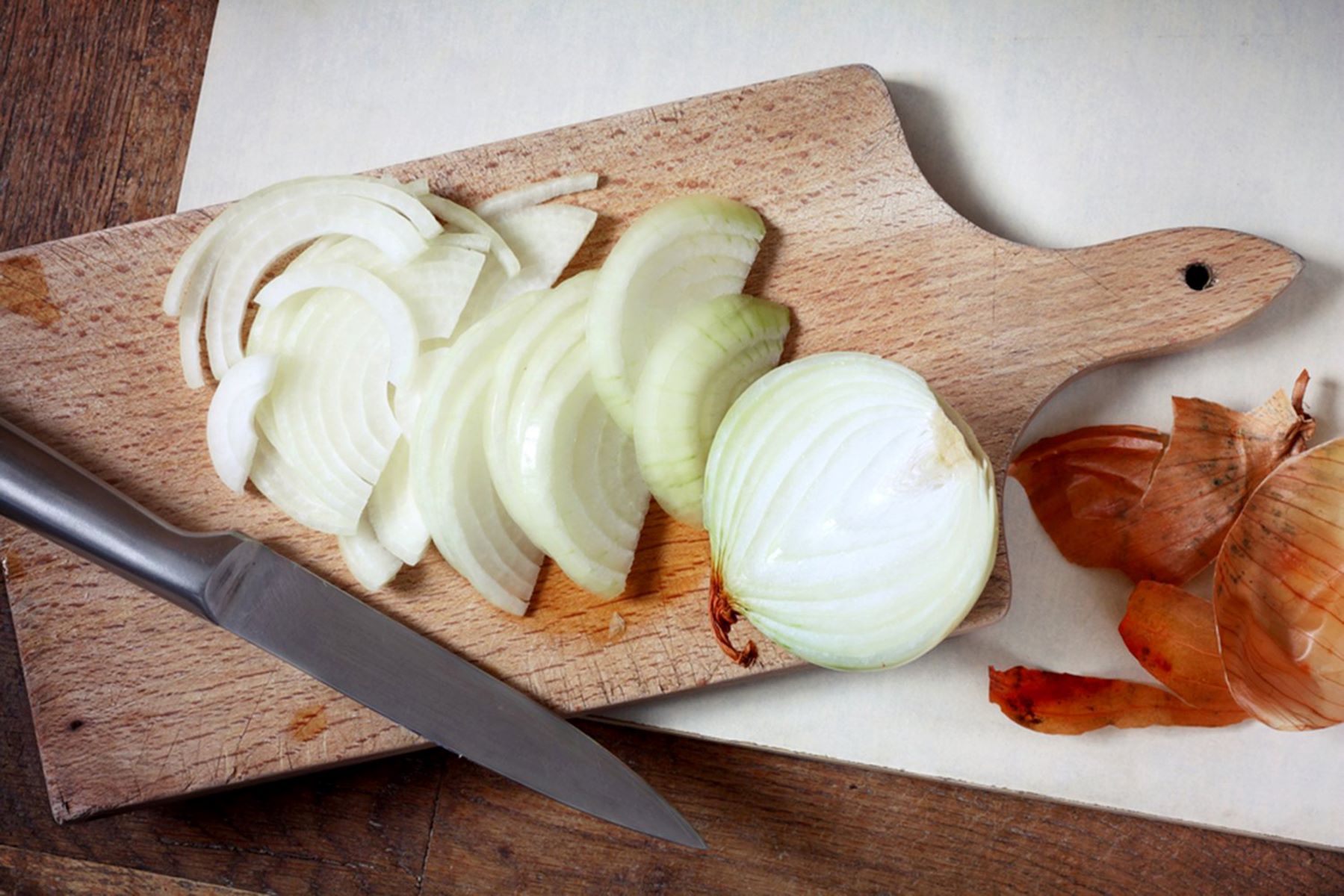


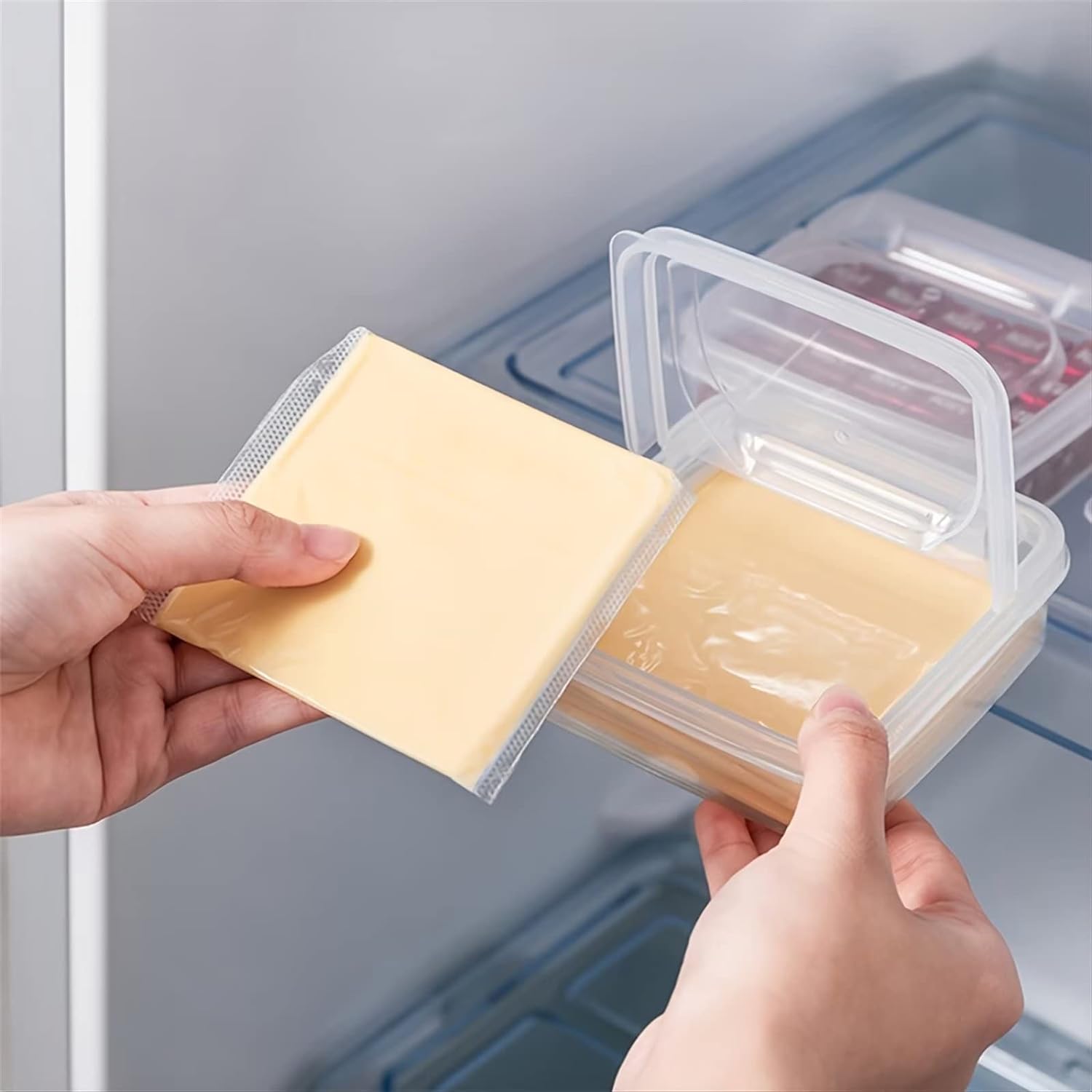
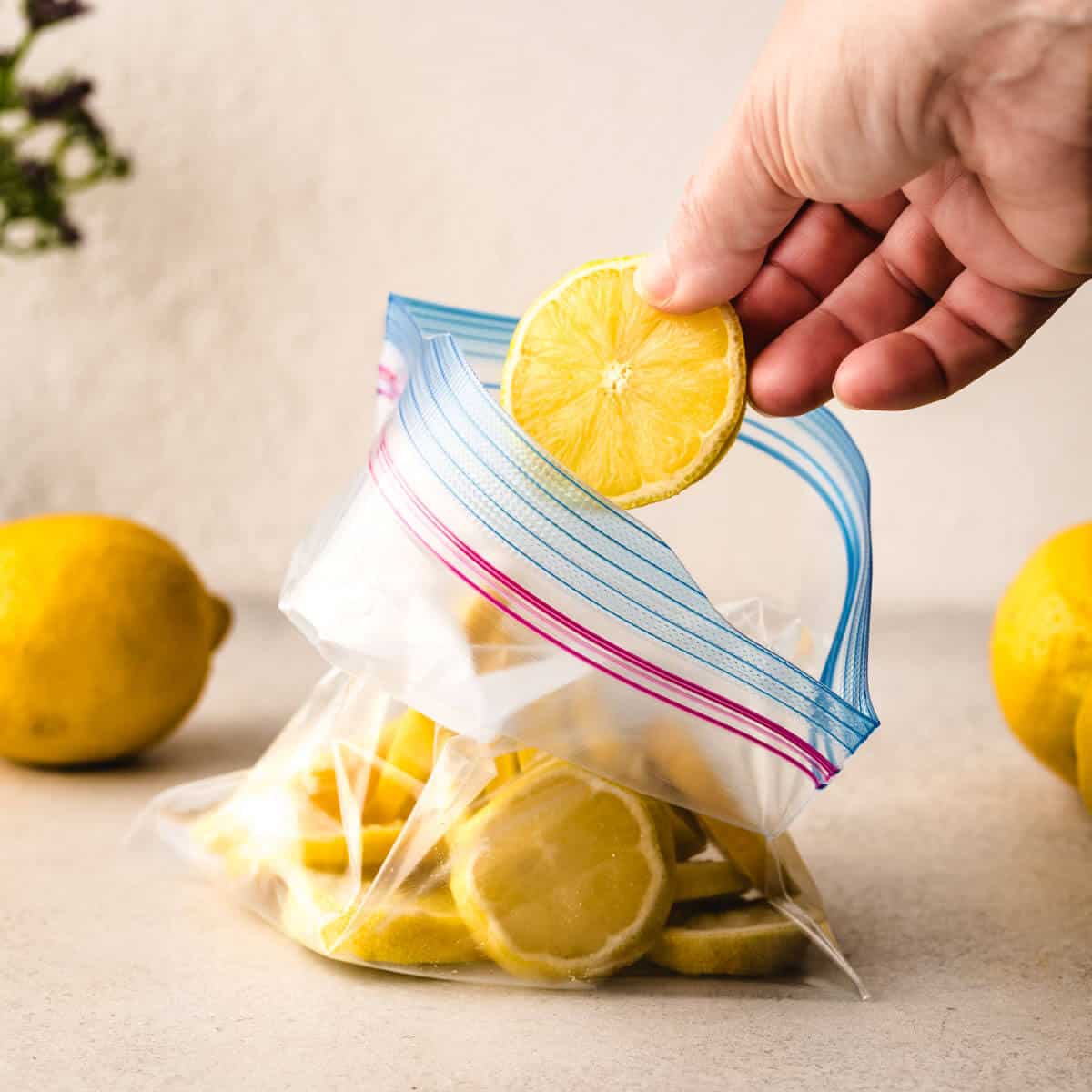
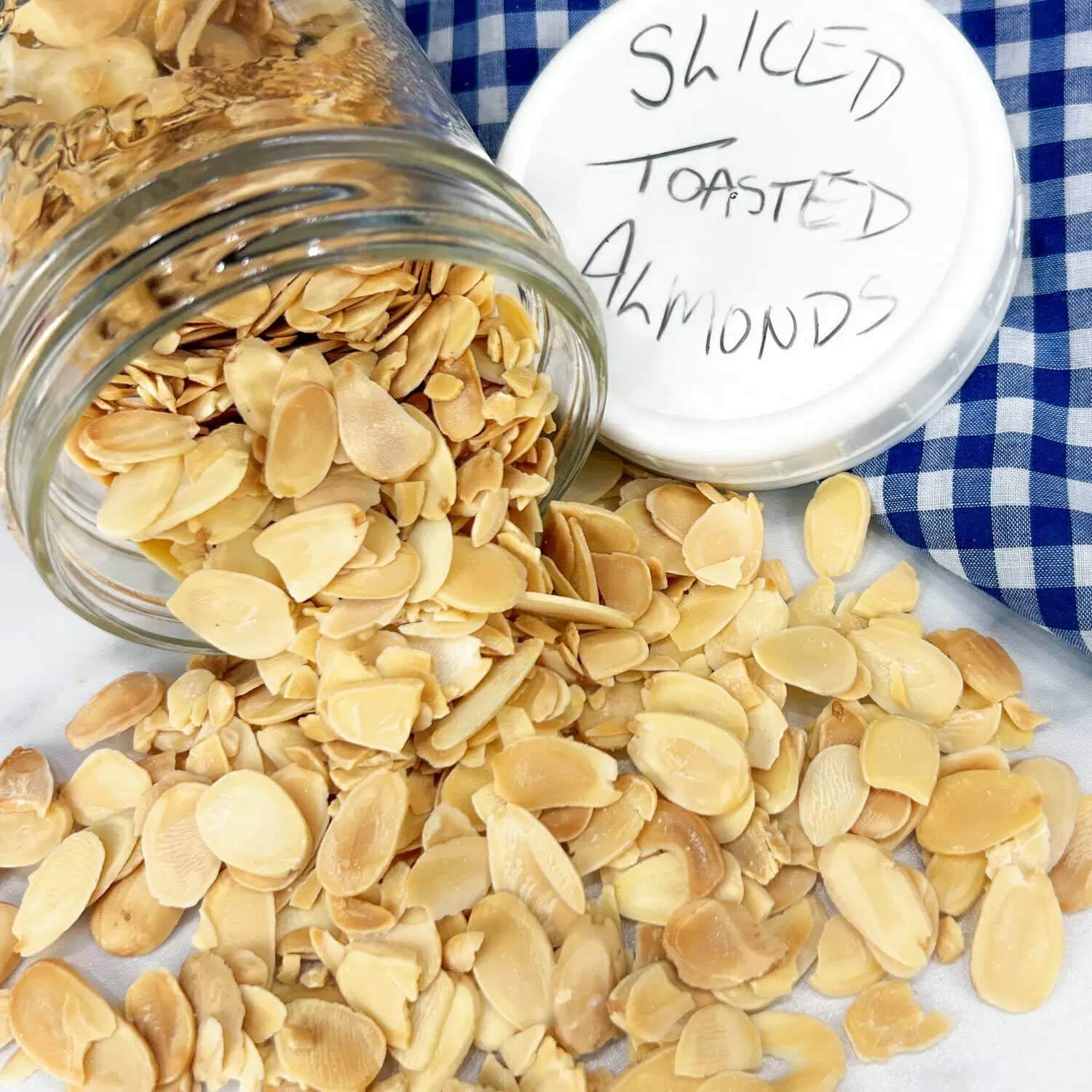
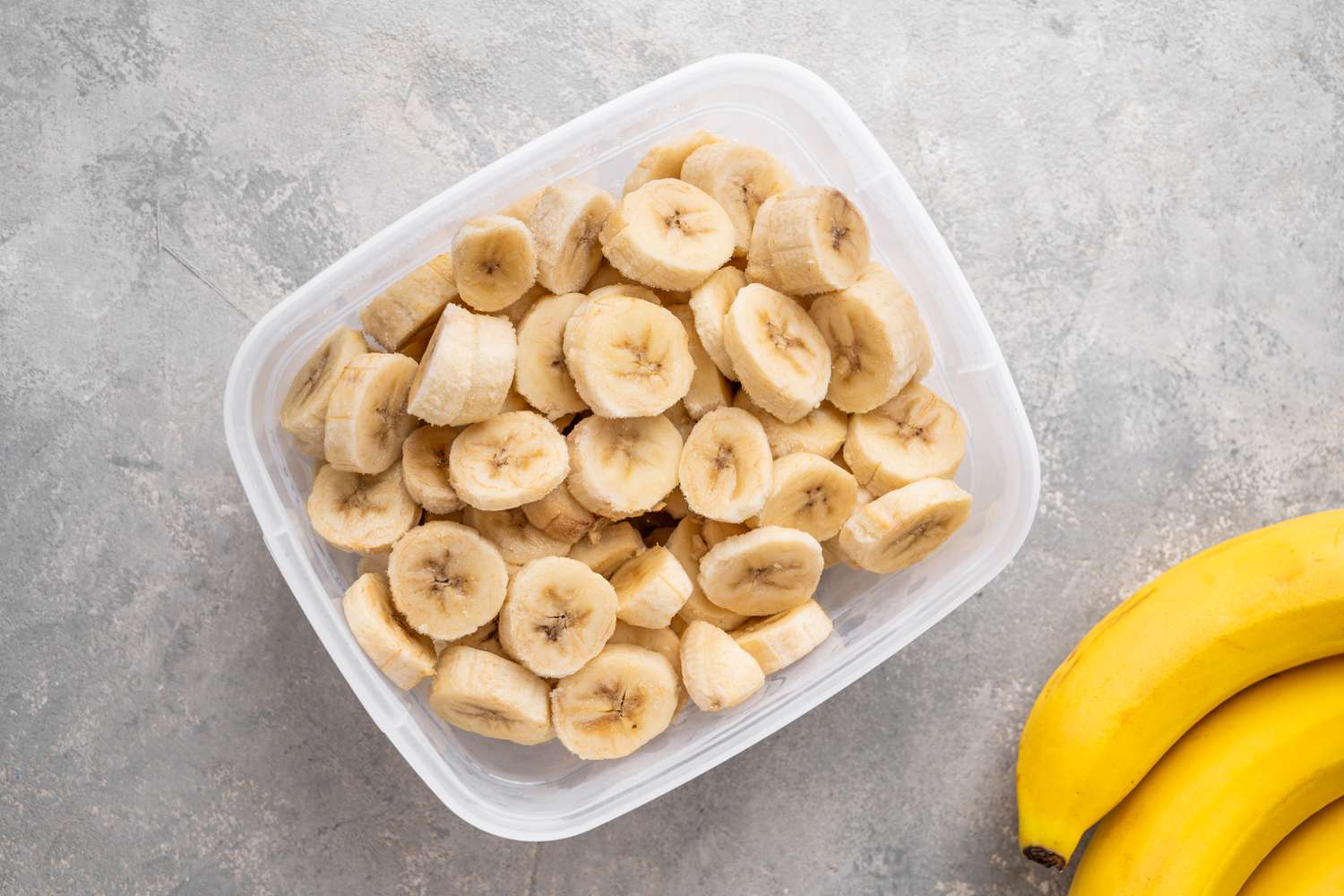
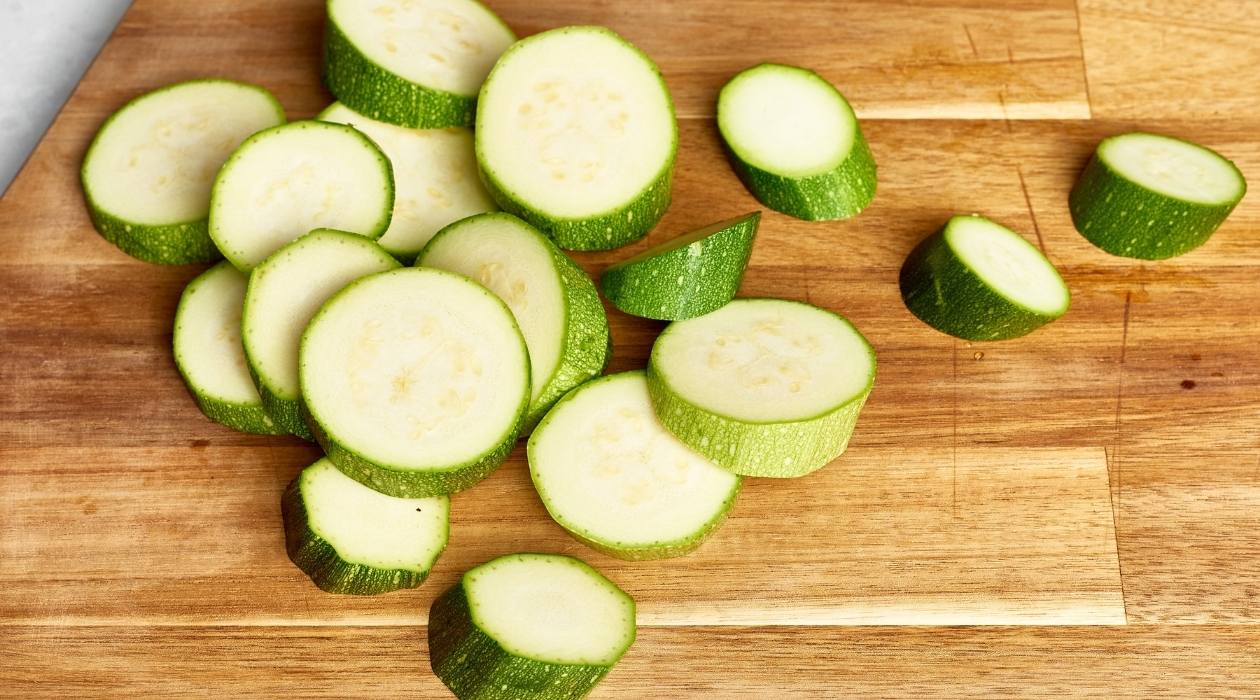


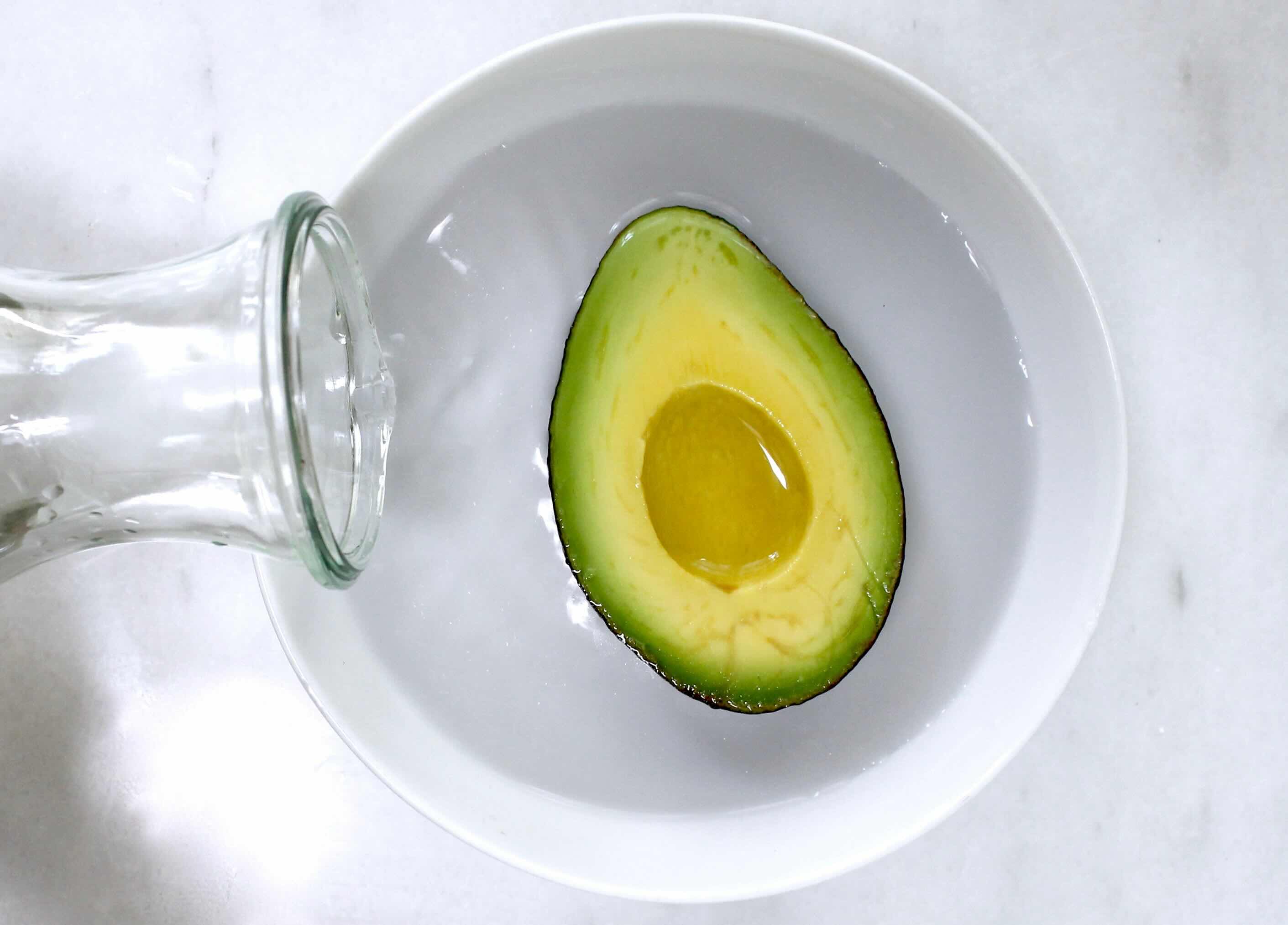




0 thoughts on “How To Store Sliced Bread”